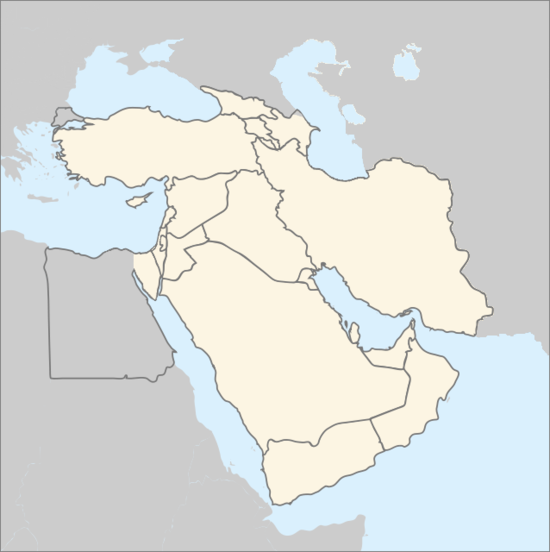Western Asia
.svg.png)
Western Asia, West Asia, Southwest Asia or Southwestern Asia are terms that describe the westernmost portion of Asia. The terms are partly coterminous with the Middle East - which describes geographical position in relation to Western Europe rather than location within Asia. Due to this perceived Eurocentrism, international organizations such as the United Nations,[2] have replaced Middle East and Near East with Western Asia. This region and Europe are collectively referred to as Western Eurasia.
Contents |
Geography
Western Asia is located directly south of Eastern Europe.
Climate
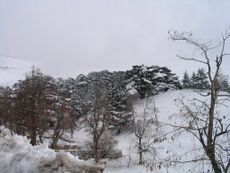
Western Asia is primarily arid and semi-arid, and can be subject to drought; nonetheless, there exists vast expanses of forests and fertile valleys. The region consists of grasslands, rangelands, deserts, and mountains. Water shortages are a problem in many parts of West Asia, with rapidly growing populations increasing demands for water, while salinization and pollution threaten water supplies.[3] Major rivers, including the Tigris and Euphrates, provide sources for irrigation water to support agriculture.
There are two wind phenomena in Western Asia: the sharqi and the shamal. The sharqi (or sharki) is a wind that comes from the south and southeast. It is seasonal, lasting from April to early June, and comes again between late September and November. The winds are dry and dusty, with occasional gusts up to 80 kilometers per hour (50 miles per hour) and often kick up violent sand and dust storms that can carry sand a few thousand meters high, and can close down airports for short periods of time. These winds can last for a full day at the beginning and end of the season, and for several days during the middle of the season. The shamal is a summer northwesterly wind blowing over Iraq and the Persian Gulf states (including Saudi Arabia and Kuwait), often strong during the day, but decreasing at night. This weather effect occurs anywhere from once to several times a year.[4]
Topography
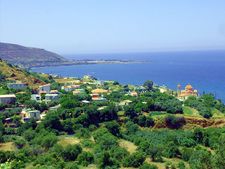
While Western Asia mainly contains areas with low relief, Turkey, Iran, and Yemen include mountainous terrain. The Anatolian Plateau is sandwiched between the Pontus Mountains and Taurus Mountains in Turkey. Mount Ararat in Turkey rises to 5,165 meters. The Zagros Mountains are located in Iran, in areas along its border with Iraq. The Central Plateau of Iran is divided into two drainage basins. The northern basin is Dasht-e Kavir (Great Salt Desert), and Dasht-e-Lut is the southern basin.
In Yemen, elevations exceed 3,700 meters in many areas, and highland areas extend north along the Red Sea coast and north into Lebanon. A fault-zone also exists along the Red Sea, with continental rifting creating trough-like topography with areas located well-below sea level.[5] The Dead Sea, located on the border between the West Bank, Israel, and Jordan, is situated at 418 m (1371 ft) below sea level, making it the lowest point on the surface of the Earth.[6]
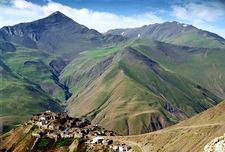
A large lowland belt is located on the Arabian Peninsula, from central Iraq, through Saudi Arabia, and to Oman and the Arabian Sea. The Euphrates and Tigris rivers cut through the lowland belt in Iraq and flow into the Persian Gulf. Rub' al Khali, one of the world's largest sand deserts, spans the southern third of the Arabian Peninsula in Saudi Arabia, parts of Oman, the United Arab Emirates and Yemen. Jebel al Akhdar is a small range of mountains located in northeastern Oman, bordering the Gulf of Oman.
Geology
Three major tectonic plates converge on Western Asia, including the African, Eurasian, and Arabian plates. The boundaries between the tectonic plates make up the Azores-Gibraltar Ridge, extending across North Africa, the Red Sea, and into Iran.[7] The Arabian Plate is moving northward into the Anatolian plate (Turkey) at the East Anatolian Fault,[8] and the boundary between the Aegean and Anatolian plate in eastern Turkey is also seismically active.[7]
Water resources
Several major aquifers provide water to large portions of Western Asia. In Saudi Arabia, two large aquifers of Palaeozoic and Triassic origins are located beneath the Jabal Tuwayq mountains and areas west to the Red Sea.[9] Cretaceous and Eocene-origin aquifers are located beneath large portions of central and eastern Saudi Arabia, including Wasia and Biyadh which contain amounts of both fresh water and saline water.[9] Flood or furrow irrigation, as well as sprinkler methods, are extensively used for irrigation, covering nearly 90,000 km² across Western Asia for agriculture.[10]
UN subregion of Western Asia

The countries and territories in the UN Subregion of Western Asia,[11] listed below:
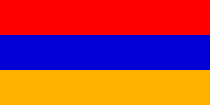 Armenia
Armenia Azerbaijan
Azerbaijan Bahrain
Bahrain Cyprus
Cyprus Georgia
Georgia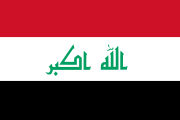 Iraq
Iraq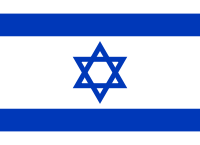 Israel
Israel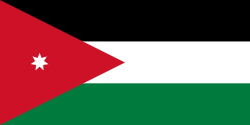 Jordan
Jordan Kuwait
Kuwait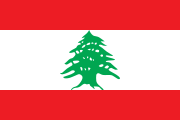 Lebanon
Lebanon Oman
Oman Occupied Palestinian Territory
Occupied Palestinian Territory Qatar
Qatar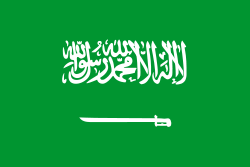 Saudi Arabia
Saudi Arabia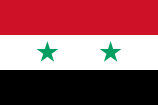 Syria
Syria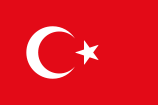 Turkey
Turkey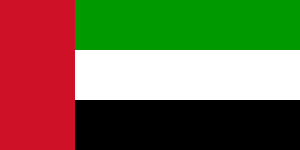 United Arab Emirates
United Arab Emirates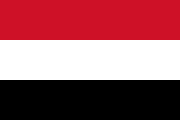 Yemen
Yemen
Though not included in the UN subregion of Western Asia, Iran is commonly included within Western Asia.[1][12] Afghanistan is also sometimes included in a broader definition of "Western Asia", although Afghanistan can be considered Central Asian,[13][14] South Asian,[15][16][17] or West Asian.[12] The Sinai Peninsula of Egypt is also sometimes included in the region.[18]
Territory and region data
| Country, with flag | Area (km²) |
Population (2009) |
Density (per km²) |
Capital | Nominal GDP[19] (2009) |
Per capita[20] (2009) |
Currency | Government | Official languages | |
|---|---|---|---|---|---|---|---|---|---|---|
| Anatolia: | ||||||||||
| 783,562 | 72,561,312 | 95 | Ankara | $615.33 billion | $8,723 | Turkish lira | Parliamentary republic | Turkish | ||
| Arabian Peninsula: | ||||||||||
| 665 | 791,000 | 1,189 | Manama | $19.4 billion | $19,455 | Bahraini dinar | Constitutional monarchy | Arabic | ||
| 17,820 | 3,100,000 | 174 | Kuwait City | $156.31 billion | $57,482 | Kuwaiti dinar | Constitutional hereditary | Arabic | ||
| 212,460 | 3,200,000 | 15 | Muscat | $52.3 billion | $18,013 | Omani rial | Absolute monarchy | Arabic | ||
| 11,437 | 1,409,000 | 123 | Doha | $92.5 billion | $68,871 | Qatari riyal | Absolute monarchy | Arabic | ||
| 1,960,582 | 28,686,633 | 15 | Riyadh | $438.01 billion | $16,778 | Saudi riyal | Absolute monarchy | Arabic | ||
| 82,880 | 6,888,888 | 8 | Abu Dhabi | $229.97 billion | $46,857 | UAE dirham | Federal Constitutional monarchy | Arabic | ||
| 527,970 | 23,580,000 | 45 | Sana'a | $26.2 billion | $1,061 | Yemeni rial | Constitutional republic | Arabic | ||
| Caucasus: | ||||||||||
| 29,800 | 3,245,900 | 109 | Yerevan | $8.71 billion | $2,667 | Armenian dram | Presidential republic | Armenian | ||
| 86,600 | 8,922,000 | 103 | Baku | $43.11 billion | $4,807 | Azerbaijani manat | Presidential republic | Azerbaijani | ||
| 69,700 | 4,385,841 | 63 | Tbilisi | $10.74 billion | $2,448 | Georgian lari | Semi-presidential republic | Georgian | ||
| Levant: | ||||||||||
| 9,250 | 801,622 | 90 | Nicosia | $23.2 billion | $29,619 | Euro | Presidential republic | Greek, Turkish | ||
| 438,317 | 31,234,000 | 71 | Baghdad | $70.1 billion | $2,200 | Iraqi dinar | Parliamentary republic | Arabic, Kurdish | ||
| 20,770 | 7,509,000 | 365 | Jerusalem | $194.83 billion | $26,100 | Israeli new shekel | Parliamentary democracy | Arabic, Hebrew | ||
| 92,300 | 6,318,677 | 68 | Amman | $22.93 billion | $3,828 | Jordanian dinar | Constitutional monarchy | Arabic | ||
| 10,452 | 4,224,000 | 404 | Beirut | $37 billion | $9,479 | Lebanese pound | Parliamentary republic | Arabic | ||
| 6,220 | 4,148,000 | 667 | Jerusalem (declared) | $6.6 billion | $1,600 | Dinar, pound shekel |
Presidential republic | Arabic | ||
| 185,180 | 22,198,110 | 118 | Damascus | $52.52 billion | $2,579 | Syrian pound | Presidential republic | Arabic | ||
| Persian plateau: | ||||||||||
| 647,500 | 31,889,923 | 49 | Kabul | $14 billion | $486 | Afghan afghani | Islamic republic | Dari, Pashto | ||
| 1,648,195 | 74,196,000 | 45 | Tehran | $330.46 billion | $4,459 | Iranian rial | Islamic republic | Persian | ||
| Sinai Peninsula: | ||||||||||
| 61,000 | 850,000 | 82 | Cairo | $187.95 billion | $2,450 | Egyptian pound | Semi-presidential republic | Arabic | ||
|
Sources:
Notes: 1 The figures for Turkey includes Eastern Thrace, which is not a part of Anatolia. |
||||||||||
Use in ethnicity statistics
The Canadian government uses "West Asian" in its statistics.[12]
Map of Western Asia
See also
- Middle East
- West Asian cinema
- West Asian Football Federation
- West Asian Games
- WikiProject Western Asia
Other subregions of Asia
- Central Asia
- East Asia
- North Asia
- South Asia
- Southeast Asia
References
- ↑ 1.0 1.1 "Middle East, West Asia". National Geographic Style Manual. National Geographic Society. http://stylemanual.ngs.org/Intranet/styleman.nsf/b2195c3b07a980d38525665100674e5c/3fcb99599faed7fb852566ab0068ec47?OpenDocument.
- ↑ United Nations Cartographic Section Web Site, United Nations Statistics Division
- ↑ "Chapter 7: Middle East and Arid Asia". IPCC Special Report on The Regional Impacts of Climate Change: An Assessment of Vulnerability. Intergovernmental Panel on Climate Change (IPCC). 1997. http://www.grida.no/climate/ipcc/regional/index.htm.
- ↑ Taru Bahl, M H Syed, ed (2003). Encyclopaedia of the Muslim World. New Delhi: Anmol Publications. pp. 20. ISBN 9788126114191. http://books.google.co.uk/books?id=2x4jq4bXrq0C&pg=PA20&dq=%22Sharqi%22+wind&as_brr=3. Retrieved 1 February 2009.
- ↑ Sweeney, Jerry J., William R. Walter. "Preliminary Definition of Geophysical Regions for the Middle East and North Africa" (PDF). Lawrence Livermore National Laboratory. http://www.llnl.gov/tid/lof/documents/pdf/235042.pdf.
- ↑ "ASTER Image Gallery: The Dead Sea". NASA. http://asterweb.jpl.nasa.gov/gallery-detail.asp?name=deadsea.
- ↑ 7.0 7.1 Beaumont (1988), p. 22
- ↑ Muehlberger, Bill. "The Arabian Plate". NASA, Johnson Space Center. http://eol.jsc.nasa.gov/handbooks/arabianpages/mainframe.htm.
- ↑ 9.0 9.1 Beaumont (1988), p. 86
- ↑ "Food and Agriculture Organization (FAO)". http://www.fao.org/AG/agl/AGLW/aquastat/regions/neast/index6.stm.
- ↑ "United Nations Statistics Division- Standard Country and Area Codes Classifications (M49)". United Nations Statistics Division. http://millenniumindicators.un.org/unsd/methods/m49/m49regin.htm. Retrieved 2010-07-24.
- ↑ 12.0 12.1 12.2 "Ethnic Origin (247), Single and Multiple Ethnic Origin Responses (3) and Sex (3) for the Population of Canada, Provinces, Territories, Census Metropolitan Areas and Census Agglomerations, 2006 Census". Statistics Canada. 2006. http://www12.statcan.ca/english/census06/data/topics/RetrieveProductTable.cfm?TPL=RETR&ALEVEL=3&APATH=3&CATNO=&DETAIL=0&DIM=&DS=99&FL=0&FREE=0&GAL=0&GC=99&GK=NA&GRP=1&IPS=&METH=0&ORDER=1&PID=92333&PTYPE=88971&RL=0&S=1&ShowAll=No&StartRow=1&SUB=801&Temporal=2006&Theme=80&VID=0&VNAMEE=&VNAMEF=.
- ↑ The 2007 Middle East & Central Asia Politics, Economics,and Society Conference University of Utah.
- ↑ "Regional Economic Outlook: Middle East & Central Asia" May 2006, International Monetary Fund.
- ↑ CIA world factbook, Afghanistan - Geography (Location: Southern Asia)
- ↑ South Asia: Data, Projects, and Research
- ↑ Center for South Asian Studies
- ↑ Western Asia
- ↑ International Monetary Fund, World Economic Outlook Database, April 2010: Nominal GDP list of countries. Data for the year 2009.
- ↑ World Economic Outlook Database-April 2010, International Monetary Fund. Accessed on April 24, 2010.
|
|||||
|
|||||||||||||||||||||||||||||||||||||
